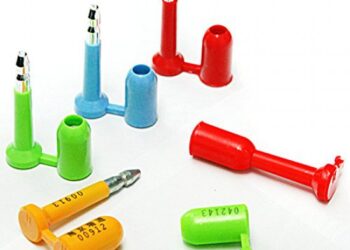In today’s interconnected world, the safe and efficient transportation of goods is of paramount importance. This is especially true when it comes to hazardous materials, which pose unique challenges due to their potential to cause harm to human health, the environment, and infrastructure. To address these challenges, international standards like ISO 17712 have been established to ensure the security and safety of cargo during transportation. ISO 17712 specifically focuses on the certification of high-security seals used to secure containers and trailers, thereby playing a crucial role in safeguarding hazardous materials during transit.
Understanding ISO 17712 Certification:
ISO 17712 is a standard developed by the International Organization for Standardization (ISO) that sets forth requirements for the design, testing, and performance of mechanical seals used on shipping containers and trailers. These seals are an integral part of the security measures aimed at preventing unauthorized access to cargo, particularly hazardous materials, during transportation. The certification process involves rigorous testing and evaluation to ensure that the seals are tamper-evident and capable of deterring unauthorized access effectively.
Role in Ensuring Safety of Hazardous Materials:
The transportation of hazardous materials presents unique challenges due to the potential risks they pose. These risks include not only the threat of theft and tampering but also the possibility of accidents or intentional actions that could lead to spills, leaks, fires, or explosions. ISO 17712-certified seals play a pivotal role in ensuring the safety of hazardous materials during transportation in several ways:
Tamper-Evident Protection:
ISO 17712-certified seals are designed to provide clear evidence if they have been tampered with. This is crucial for identifying any unauthorized access to containers carrying hazardous materials. Tamper-evident features, such as unique serial numbers and mechanisms that break or change appearance upon tampering, ensure that any attempt at interference is immediately noticeable.
Preventing Unauthorized Access:
The primary purpose of ISO 17712-certified seals is to prevent unauthorized access to cargo. For hazardous materials, this is essential to prevent theft, sabotage, or intentional release of the dangerous substances, all of which could have devastating consequences for human safety and the environment.
Mitigating Environmental and Public Health Risks:
Hazardous materials, if not properly secured, can pose significant risks to the environment and public health. Leaks, spills, or other mishaps could lead to contamination of water bodies, soil, and air, endangering ecosystems and communities. ISO 17712-certified seals contribute to preventing such incidents by maintaining the integrity of containers and trailers carrying hazardous cargo.
Regulatory Compliance:
Many countries have regulations in place that mandate the use of high-security seals for certain types of cargo, including hazardous materials. ISO 17712 certification ensures that these seals meet internationally recognized standards, facilitating compliance with various national and international regulations.
Supply Chain Security:
ISO 17712-certified seals enhance supply chain security by creating a verifiable record of container integrity throughout the transportation process. This accountability reduces the potential for cargo substitution, tampering, or theft, which is particularly important when dealing with hazardous materials that require strict handling and monitoring.
Risk Management and Insurance:
Using ISO 17712-certified seals can lead to reduced insurance premiums by demonstrating that proper security measures are in place to mitigate risks associated with hazardous material transportation. Insurers are more likely to provide coverage and favorable terms to companies that adhere to recognized security standards.
Emergency Response Preparedness:
In the unfortunate event of an accident or incident involving hazardous materials, first responders and emergency teams need accurate information about the cargo to effectively manage the situation. Secure seals, with their unique identification markings, aid in quickly identifying the contents of containers, enabling a more efficient and targeted response.
Conclusion:
ISO 17712 certification plays a vital role in ensuring the safety of hazardous materials during transportation. By providing tamper-evident and high-security seals for containers and trailers, the standard contributes to preventing unauthorized access, minimizing the risk of theft, tampering, and potential environmental or public health disasters. Compliance with ISO 17712 not only enhances cargo security but also promotes international trade, regulatory adherence, and emergency preparedness, making it an indispensable component of the global logistics landscape, particularly for the transportation of hazardous materials.











